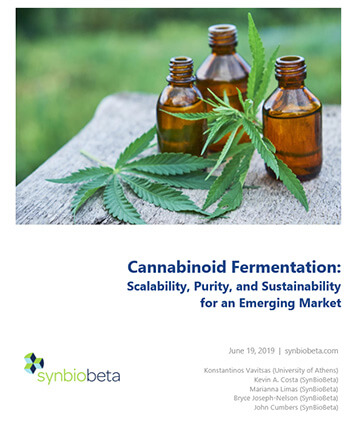Using the tools of synthetic biology, innovators are making a bold move into the cannabinoid industry, particularly as cannabinoids are increasingly recognized for their therapeutic uses. Cannabinoid fermentation is more precise, economically scalable, and environmentally sustainable than plant production. Biotechnologists are supported by a growing list of investors who recognize tremendous consumer interest and an improving regulatory landscape. Cannabinoid fermentation is poised to become a major future supplier of high-grade, low-cost cannabinoids for therapeutic research purposes, as well as a booming consumer market.
 [Editor’s note: This text is from the conclusion of the June 19 report: Cannabinoid Fermentation: Scalability, Purity, and Sustainability for an Emerging Market. Click image for full report.]
[Editor’s note: This text is from the conclusion of the June 19 report: Cannabinoid Fermentation: Scalability, Purity, and Sustainability for an Emerging Market. Click image for full report.]
Nonetheless, a few factors call for caution. First and foremost, the legal and regulatory landscape remains uncertain. Second, even though fermentation itself is very mature, it will take some time — not just months, but one or more years — before biosynthetic routes are optimized and fermented cannabinoids are commercialized, and longer still before it is highly economical. And third, the cannabinoid ecosystem (for both traditional extraction and biosynthesis) is becoming crowded, meaning there will likely be some consolidation and losers among this first batch of innovators.
Synthetic biology promises to significantly shape the emerging cannabinoids industry from the ground-up by providing low-cost, high-quality active ingredients. It will enable a broad range of therapeutics and products for patients and consumers, and give them improved labeling and decision-making ability. The next couple of years are likely to establish the leading innovators, producers, and investors in cannabinoids for many years to come.































